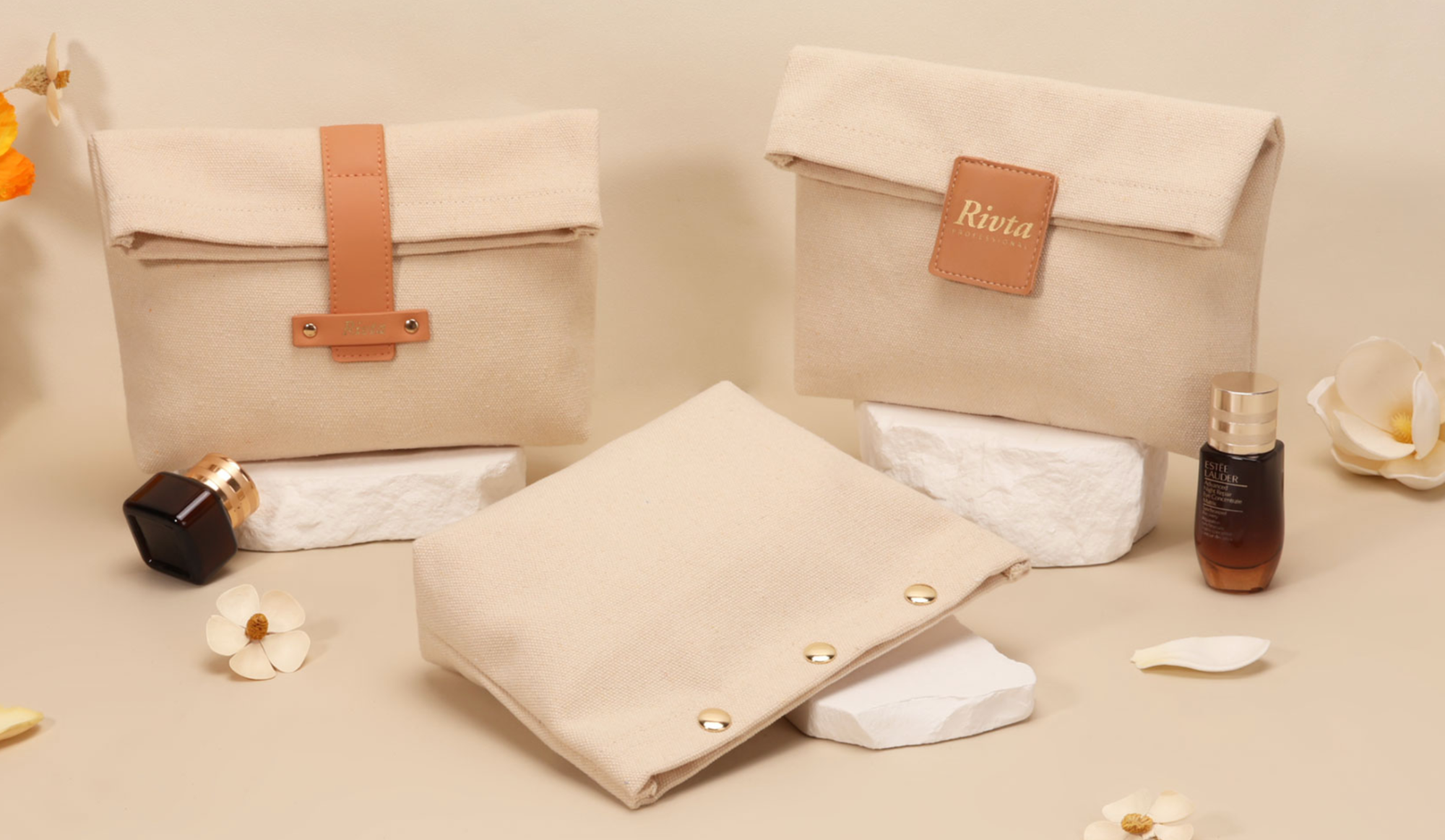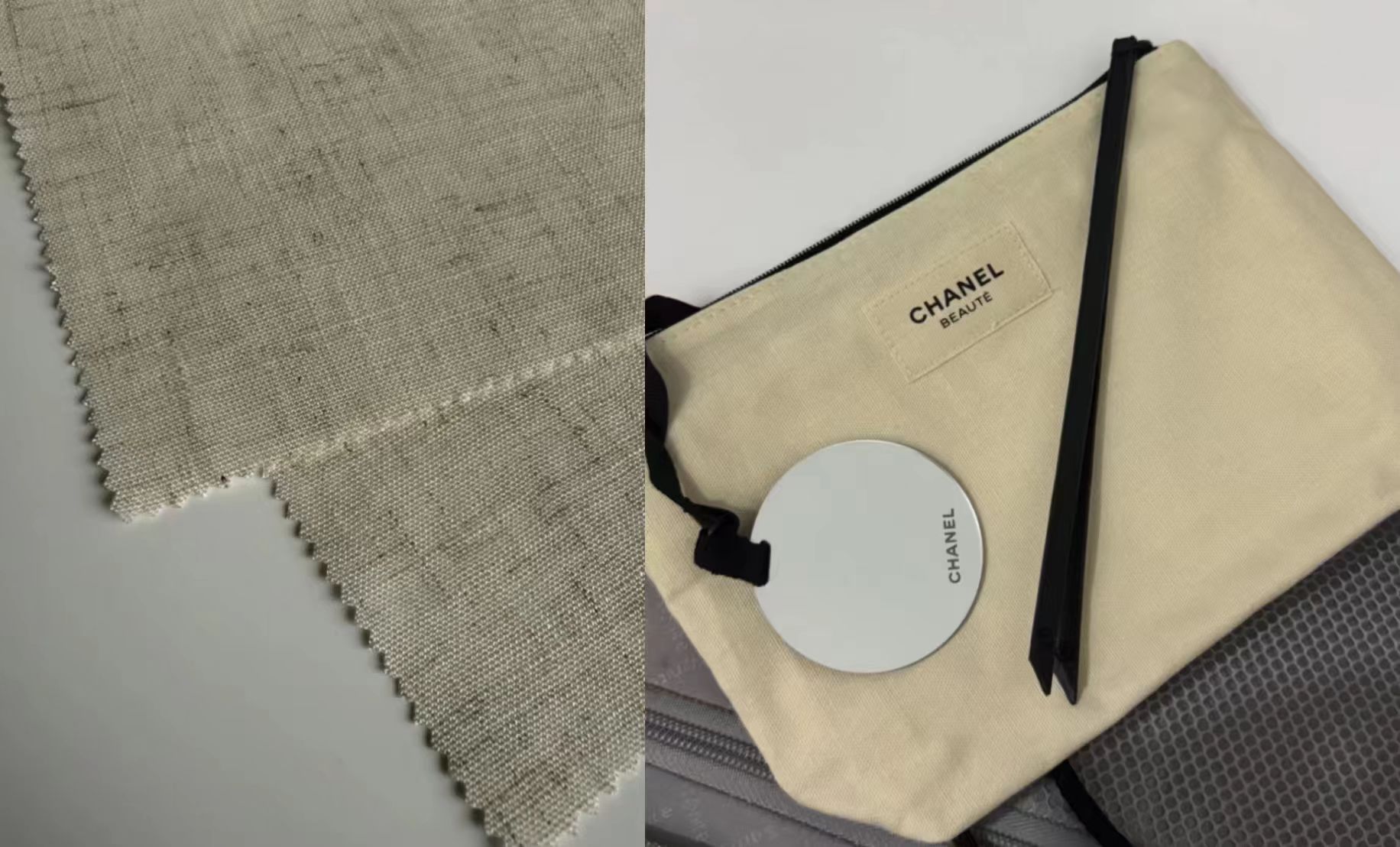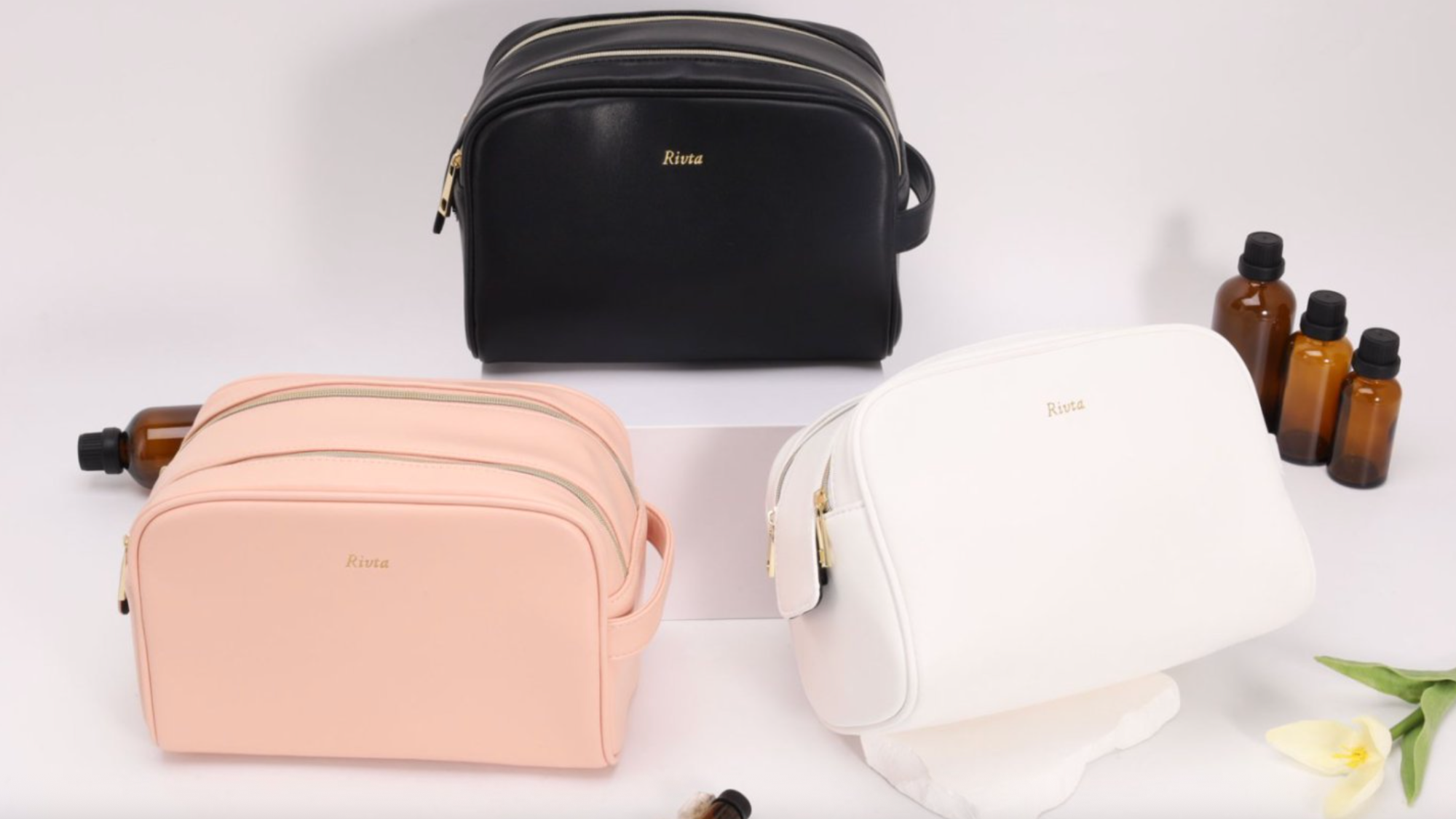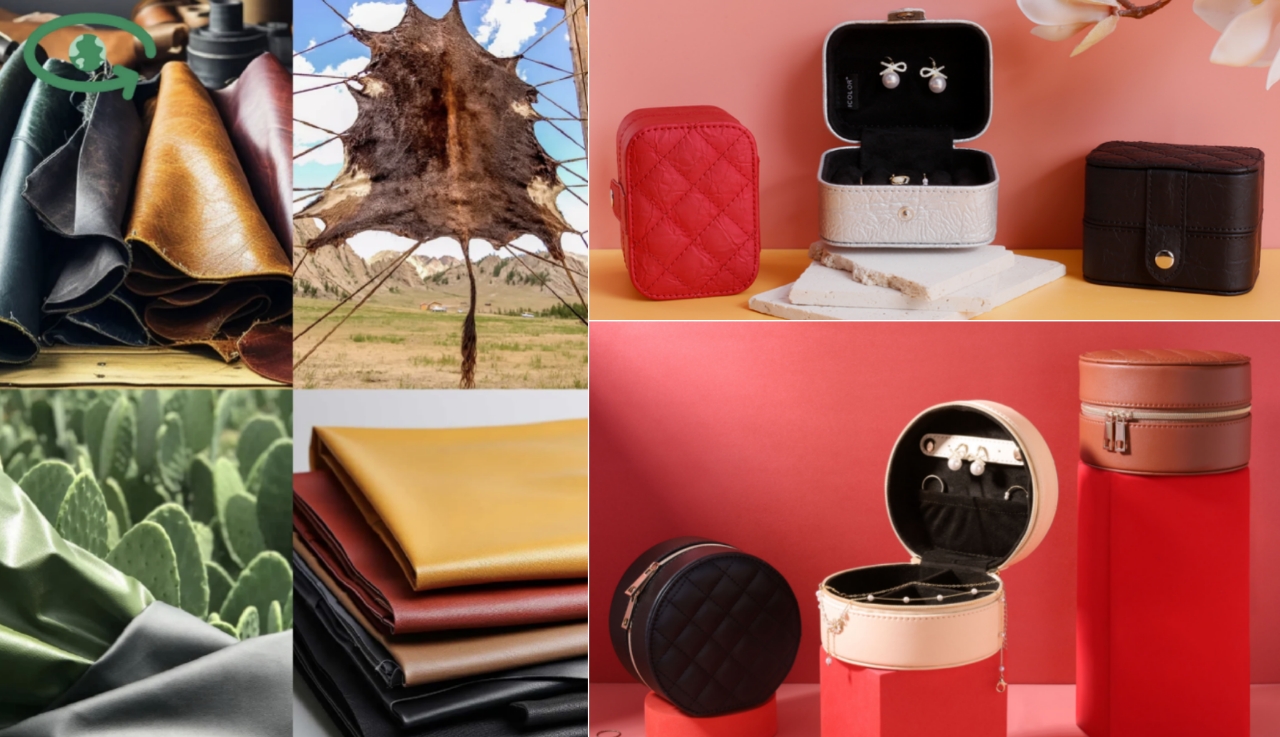Canvas Tote Bags vs. Leather Tote Bags: Key Differences Explained
In today’s business landscape, sustainability isn’t a “nice to have”—it’s a strategic imperative. The tote bag you choose speaks volumes about your brand values, environmental footprint, and commitment to eco-minded consumers. At Rivta, we’ve made it our mission to deliver truly sustainable solutions. In this post, we’ll explore canvas vs. leather tote bags through a sustainability lens—diving deeper into each material’s lifecycle, cost implications, branding potential, and emerging trends—so you can make the smartest choice for your brand and the planet.
Table of Contents
1. Properties of Canvas
2. Properties of Leather
3. Selecting the Right Material for Every Occasion
4. Lifecycle & Environmental Impact Analysis
5. Customization & Branding Opportunities
6. Rivta’s Commitment to Sustainability
7. Canvas vs. Leather at a Glance
8. Case Study: Beauty Brand Success with Canvas
9. Frequently Asked Questions
Properties of Canvas
Canvas—woven from cotton, linen, hemp, or recycled blends—is the workhorse of tote materials. Its plain-weave construction delivers exceptional strength without excessive weight, making it ideal for everyday use, from retail packaging to event giveaways.
- Fiber Origins & Variations
- Organic Cotton Canvas: Grown without synthetic pesticides, this variety reduces chemical runoff and soil degradation.
- Recycled PET Canvas: Made from post-consumer plastic bottles, it diverts waste from landfills while preserving durability.
- Hemp & Linen: Naturally pest-resistant and requiring less water than cotton, these fibers further drive down environmental impact.
- Performance Characteristics
- Tensile Strength: High tear and abrasion resistance withstand repeated use and heavy loads.
- Breathability & Comfort: Natural fibers allow air circulation, preventing odors and mildew.
- Print & Dye Compatibility: Canvas readily accepts water-based inks and low-impact dye processes, ensuring vibrant, eco-friendly branding.
- Maintenance & Longevity
- Care: Machine-washable on gentle cycles or spot-cleanable with mild detergent.
- Life Extension: Repairable – small tears can be patched, and straps re-sewn, promoting a circular use model.
Visually, canvas lends a casual, approachable air—perfect for brands that want to underscore accessibility, eco-friendliness, and authenticity. Rivta’s organic-cotton and recycled-blend canvas totes showcase how this material can bolster your brand’s green credentials without sacrificing functionality.
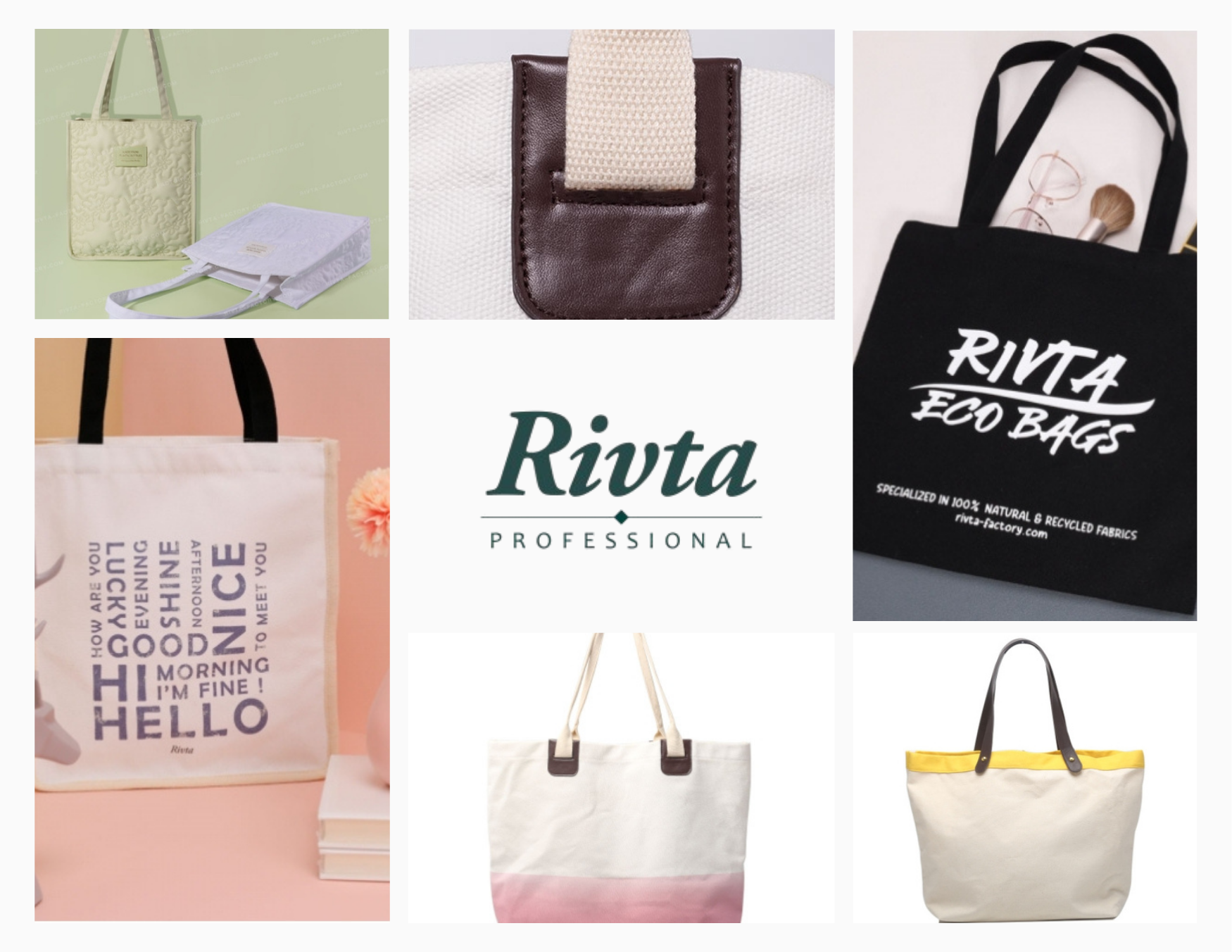
Properties of Leather
Leather tote bags convey prestige, durability, and timeless grace, developing a rich patina that tells a story over time. They’re a natural fit for luxury skincare lines, high-end essential-oil collections, or any brand seeking a premium feel.
- Grades & Finishes
- Full-Grain Leather: The highest quality, preserving the hide’s natural surface and grain.
- Top-Grain Leather: Sanded to remove imperfections, offering a smoother finish at a slightly lower cost.
- Vegetable-Tanned vs. Chrome-Tanned: Vegetable tanning uses natural tannins for a more eco-friendly process, though slower and more costly; chrome tanning accelerates production but relies on heavy metals.
- Performance Characteristics
- Longevity: Can last decades with proper care, outlasting many fabric alternatives.
- Aesthetic Evolution: Develops unique textures and color variations (“patina”) that enhance its visual appeal.
- Structural Integrity: Holds shape under load, making it suited for structured, high-end designs.
- Care & Maintenance
- Conditioning: Regular application of leather conditioners to prevent drying and cracking.
- Protection: Water-resistant sprays or waxes guard against stains and moisture damage.
- Repairability: Scratches and scuffs can often be buffed out; loose stitches and hardware replaced by a skilled
Leather’s undeniable cachet must be balanced against its environmental and ethical considerations—a topic we’ll explore in depth in the lifecycle analysis section below.
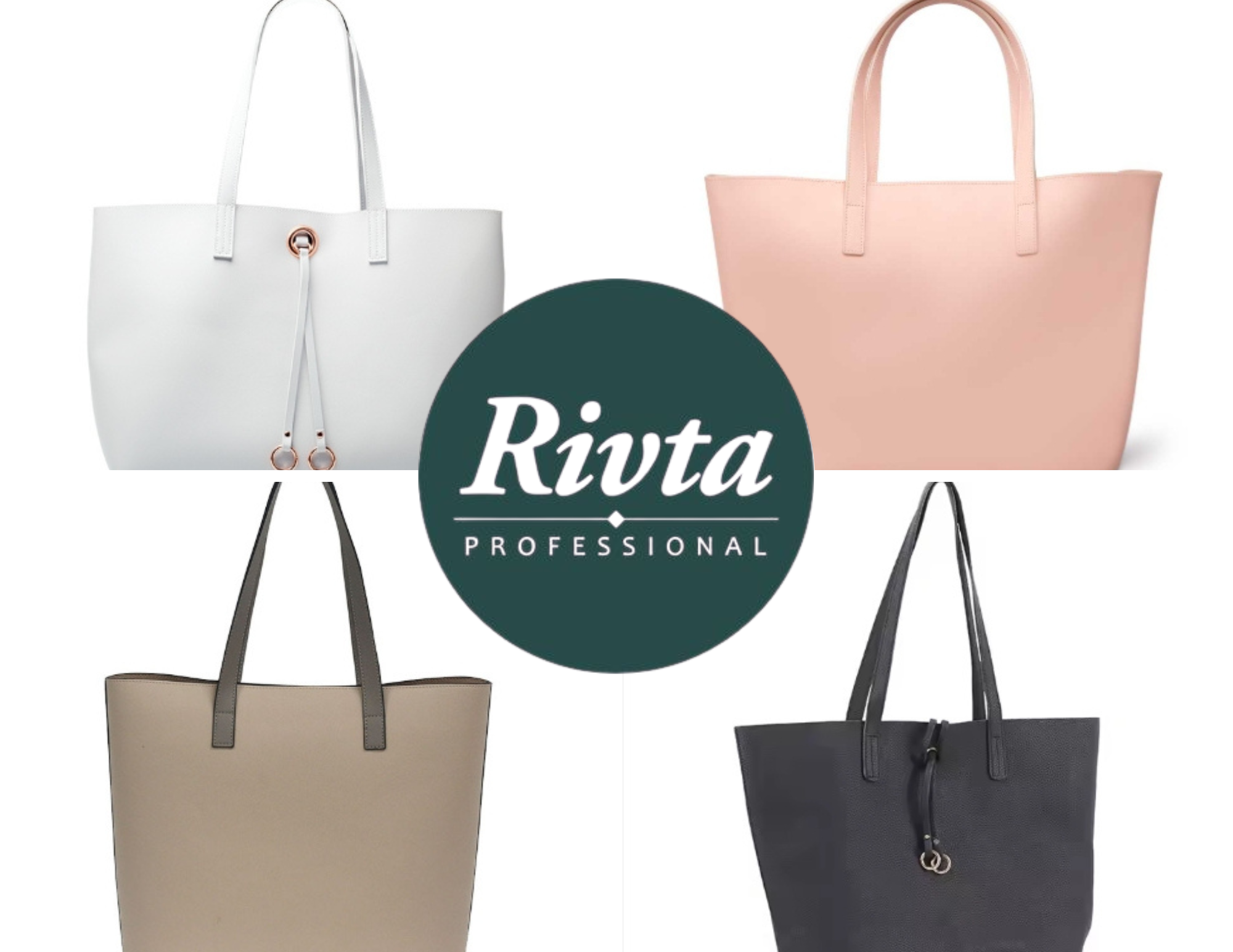
Selecting the Right Material for Every Occasion
The choice between canvas and leather often hinges on user context, brand positioning, and customer expectations.
Canvas: Everyday Versatility
- Retail & Event Giveaways
- Perfect for trade-show tote bags, product-sample kits, and branded retail packaging that customers will reuse.Eco-Kits for Parents & Outdoor Enthusiasts
- Lightweight, machine-washable totes suit on-the-go families and adventure seekers alike.Pop-Up & Limited Editions.
Small-batch, low-MOQ canvas runs let you test seasonal or promotional designs without breaking the bank.Leather: Formal Refinement
- Premium Launch Events
- Present your luxury skincare sets or artistic oils in a leather tote to create an unforgettable unboxing experience.Corporate Gifting
- A leather bag conveys premium thoughtfulness, ideal for VIP client gifts or executive welcome kits.Showroom & Flagship Stores
Leather totes reinforce high-end brand narratives when sold as lifestyle accessories alongside your core products.At Rivta, we bridge this gap by offering canvas alternatives that match leather’s durability and aesthetic—so you never have to choose between style and sustainability.
Lifecycle & Environmental Impact Analysis
A full lifecycle assessment (LCA) reveals the true environmental costs of tote materials—from raw fiber cultivation to end-of-life disposal.
1. Raw Material Extraction
a. Canvas (Organic Cotton): Uses 70–90% less water than conventional cotton; no synthetic chemicals.
b. Leather (Vegetable-Tanned): Vegetable tanning reduces chemical runoff, but the underlying animal agriculture remains high in greenhouse-gas emissions.
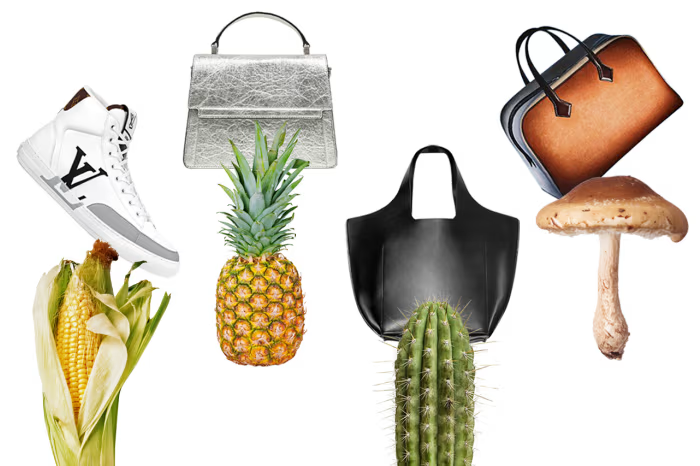
2. Manufacturing & Processing
a. Canvas Production: Energy-intensive spinning and weaving, but advances in solar-powered mills are lowering grid dependency.
b. Leather Tanning: Chrome tanning can discharge hazardous waste; facilities with ZDHC-standard purification systems mitigate much of this impact.
3. Transportation & Distribution
a. Weight & Volume: Canvas is lighter, reducing freight fuel consumption; leather’s density can increase shipping costs and emissions.
b. Packing Efficiency: Canvas bags can be folded; leather often requires protective structuring, increasing packaging material.
4. Use Phase
a. Durability vs. Frequency of Replacement: Leather may outlast canvas by decades, but canvas’s repairability and recyclability support extended product cycles.
5. End-of-Life
a. Biodegradability: Organic canvas decomposes naturally; leather degrades slowly and may release tanning chemicals if untreated.
b. Recycling & Upcycling: Canvas is easily repurposed; leather scraps can be used in composites or small goods, though industrial recycling streams are limited.
By evaluating these stages, it’s clear that while leather’s longevity is a point in its favor, canvas’s low-impact sourcing and end-of-life benefits often yield a smaller overall footprint—especially when partnered with responsible manufacturing.
Customization & Branding Opportunities
Your tote bag is more than a carrier; it’s a mobile billboard and customer-experience tool. Both canvas and leather offer unique branding avenues:
Canvas Branding
- Screen Printing & Direct-to-Garment (DTG): Vibrant, full-color graphics with water-based or low-impact inks.
- Embroidery & Appliqué: Adds texture and premium feel; ideal for small logos or monograms.
- Patches & Woven Labels: Attach branded labels or appliqués to reinforce brand identity.
- All-Over Sublimation: Unlimited design possibilities on polyester-blend canvas.
Leather Branding
- Debossing & Embossing: Imprinting your logo into the leather for a subtle, tactile effect.
- Foil Stamping: Metallic accents elevate a minimalist logo with a premium shine.
- Custom Hardware: Branded zippers, buckles, and D-rings in plated metals.
- Edge-Painting & Hand-Finishing: Precision color on leather edges for a signature look.
Strategic Tips
- Mixed-Material Panels: Combine canvas bodies with leather straps or trim to balance aesthetics, cost, and eco-credentials.
- Modular Inserts: Design removable pouches or eco-friendly liners that can be updated seasonally.
- Interactive Elements: QR codes printed or laser-etched for digital engagement campaigns.
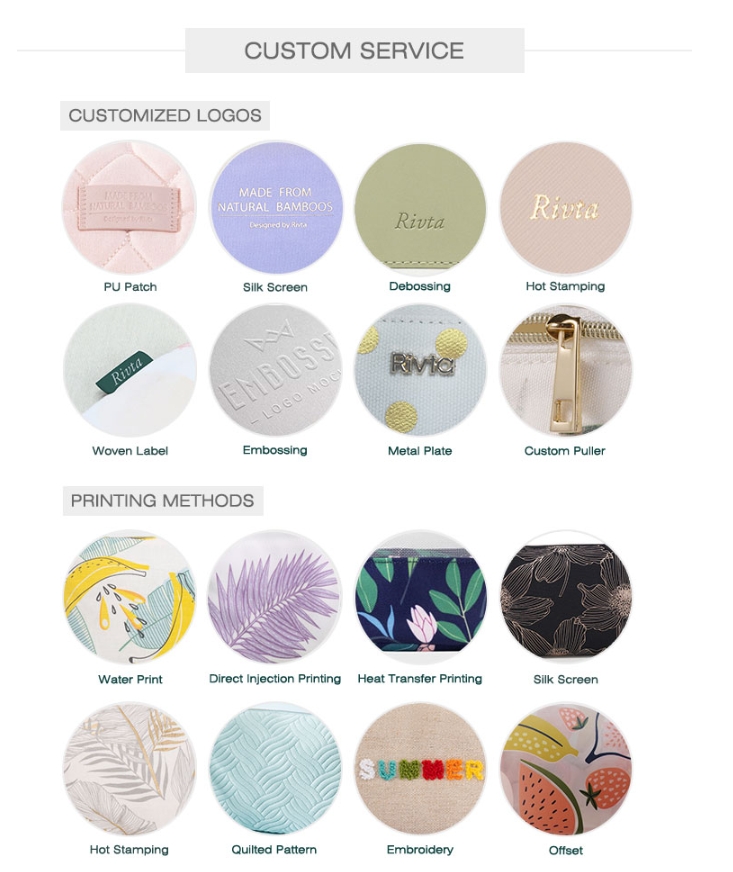
Rivta’s Commitment to Sustainability
Sustainability is woven into every fiber of our business:
Materials Innovation
We source organic cotton from GOTS-certified farms, recycled PET with Global Recycled Standard (GRS) certification, and explore emerging fibers like Piñatex (pineapple leaf) and mushroom leather.
Ethical Production
Our partner factories adhere to Fair Trade and SMETA standards, ensuring living wages, safe working conditions, and no forced labor.
Zero-Waste Philosophy
We’ve eliminated single-use plastics from all packaging and employ fabric off-cut recycling programs to close production loops.
Carbon-Neutral Logistics
By optimizing shipment consolidation and investing in renewable-energy credits, we offer carbon-neutral shipping for all orders.
Transparency & Traceability
Every batch of bags comes with a QR-enabled supply-chain passport, allowing end customers to trace materials, processing locations, and environmental metrics.Whether you’re a skincare CEO seeking sustainable packaging or an outdoor-gear buyer sourcing green merchandise, Rivta delivers high-quality, custom solutions that amplify your brand’s eco story.
Canvas vs. Leather at a Glance
| Aspect | Canvas Tote Bags | Leather Tote Bags |
|---|---|---|
| Source | Renewable plant fibers (organic cotton, linen, recycled blends) | Animal hides |
| Eco-Friendliness | High: biodegradable, low water/energy use | Moderate: dependent on tanning method, high agricultural emissions |
| Lifespan | 3–5 years with care; repairable | 10–20+ years; patina develops over time |
| Weight | Lightweight, compact | Heavier, structured |
| Maintenance | Machine-washable, spot-clean | Conditioning, protective sprays |
| Cost per Unit | US$1.50–4.00 (bulk) | US$20–80+ |
| Branding Options | Screen print, embroidery, DTG, sublimation | Debossing, foil stamp, custom hardware |
| End-of-Life | Compostable or recyclable | Limited recycling, slow biodegradation |
Case Study: Beauty Brand Success with Canvas
Background: A mid-tier skincare company sought branded tote bags for its annual sustainability summit. The primary goal: reinforce eco-credentials while providing attendees a practical keepsake.
- Material Chosen: 100% organic cotton canvas (8 oz) with GOTS certification.
- Customization: Full-color water-based screen print on one side; woven label at the base.
- Order Volume: 1,500 units, MOQ comfortable for a test run.
- Results:
- Cost Savings: 40% lower landed cost compared to a leather tote quote.
- Sustainability Messaging: The GOTS label and “recycle me” print drove social-media engagement, with summit attendees sharing unboxing posts.
- Longevity: Post-event survey showed 75% of attendees continue using the bag in daily life—amplifying brand visibility long after the summit.
This example underscores how canvas can deliver on quality, branding impact, and sustainability—without the premium leather price tag.
Frequently Asked Questions
1. Can canvas withstand heavy loads like leather?
Yes—high-quality 12–14 oz canvas can comfortably carry 15–20 lbs. Reinforced stitching and webbing straps further boost capacity.
2. How do I ensure leather is responsibly sourced?
Look for vegetable-tanned hides, LWG-certified tanneries, and suppliers with transparent animal-welfare policies.
3. What’s the typical lead time for custom canvas vs. leather orders?
Canvas prototypes: 5–7 days; production 15–25 days. Leather prototypes: 7–10 days; production 25–40 days—varying by tanning process and finishing.
4. Can I mix canvas and leather in one design?
Absolutely. Compound designs (canvas body, leather straps) balance cost, aesthetics, and eco-cred.
5. How do I communicate sustainability to my customers?
Use labels and hangtags detailing certifications (GOTS, GRS), include QR-code supply-chain passports, and share stories on your website and social channels.
Your choice of tote-bag material does more than hold products—it shapes your brand narrative and market perception. Leather exudes timeless grace, but its environmental toll and care requirements may collide with today’s sustainability priorities. Canvas, in contrast, offers versatility, low impact, and broad customization—all at a fraction of the carbon footprint.
At Rivta, we’ve harnessed the best of canvas to create stylish, durable totes that meet your green objectives and engage eco-minded audiences. From essential oils to outdoor gear, our custom solutions let you lead with confidence and conscience.
Make the choice that reflects your vision—partner with Rivta for tote bags that embody quality, sustainability, and enduring style.
Have questions or need a personalized quote? Reach out to our sustainability experts today—and let’s carry your brand toward a greener future.
